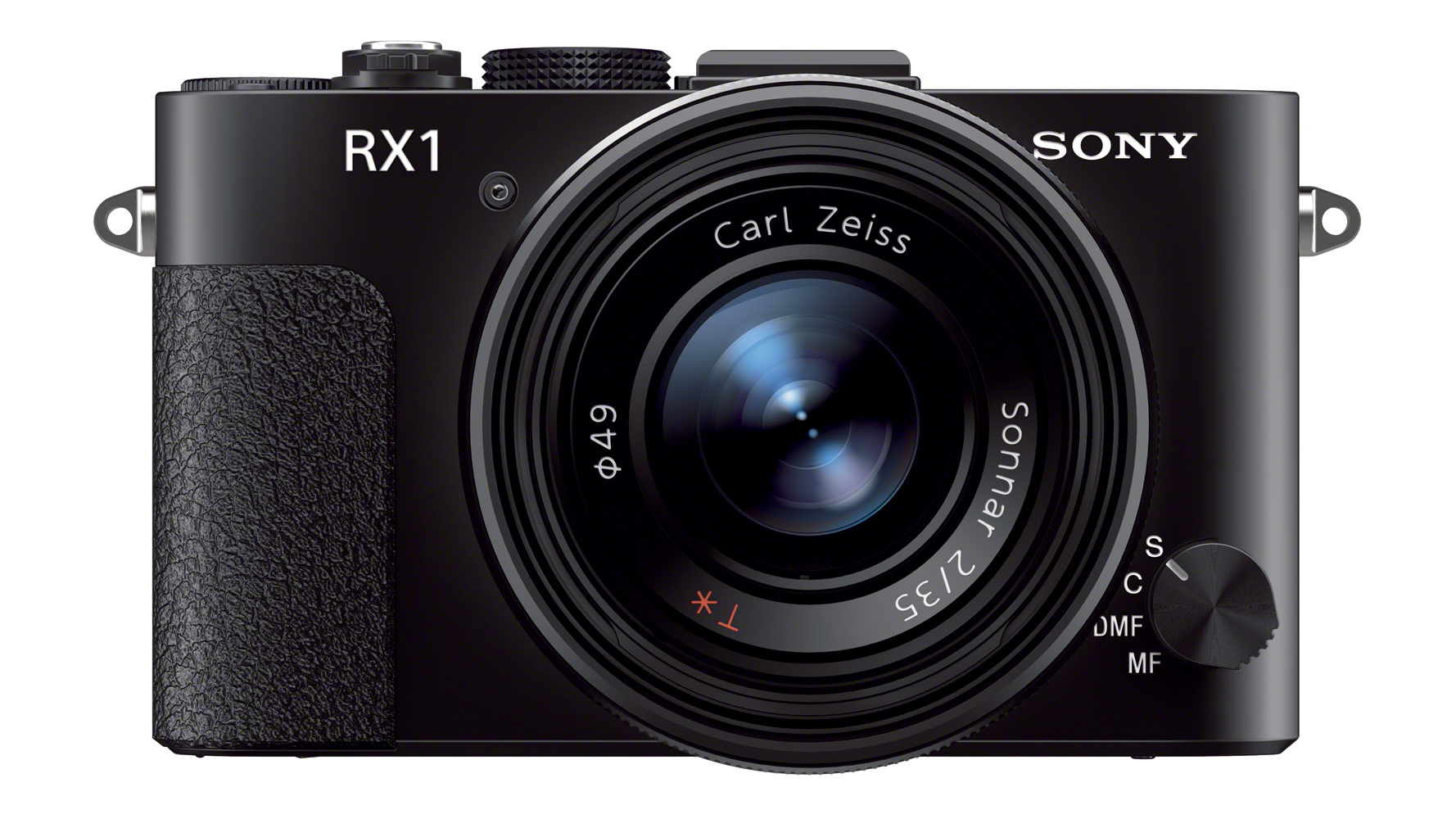Why you can trust TechRadar
We shoot a specially designed chart in carefully controlled conditions and the resulting images are analysed using DXO Analyzer software to generate the data to produce the graphs below.
A high signal to noise ratio (SNR) indicates a cleaner and better quality image.
For more more details on how to interpret our test data, check out our full explanation of our noise and dynamic range tests.
Here we compare the Sony RX1 with the Sony Alpha a99, Canon EOS 5D Mark III and Nikon D800.
JPEG signal to noise ratio
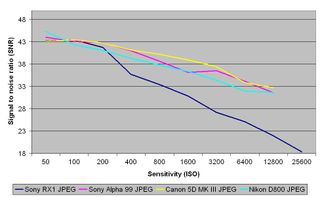
These results show that the Sony RX1's JPEG files have a similar signal to noise ratio to those from the Sony Alpha a99, Canon EOS 5D Mark III and Nikon D800 at the lowest sensitivities, but that after ISO 200 its results drop off sharply, so that it is the weakest performer by far.
Raw signal to noise ratio
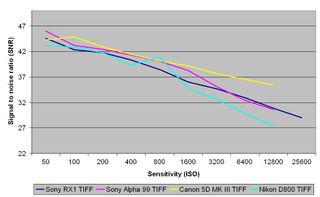
The signal to noise ratios of the TIFF images (after conversion from raw) from the Sony RX1 are stronger than those from the JPEG images, indicating that there's some heavy JPEG processing at work. The RX1 sits below the Sony Alpha a99 and Canon EOS 5D Mark III at most sensitivities, only beating the a99 at ISO 6400 and 12800 by a fraction. It starts off with a stronger ratio than the Nikon D800 at ISO 50, then is weaker at ISO 100, alternating like that at each setting until ISO 1600, after which point it holds its lead for the rest of the settings.
JPEG dynamic range
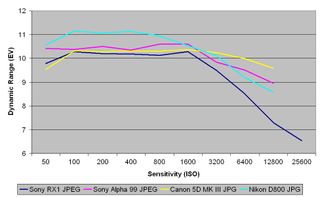
JPEG results for dynamic range show that the Sony RX1 is weaker than the other cameras, starting off below the Sony Alpha a99 and Nikon D800 but slightly above the Canon EOS 5D Mark III at ISO 50, before falling into last place at ISO 100 and above. The gap is only slight in the low to mid-range, but plummets sharply at ISO 3200 and above.
Raw dynamic range
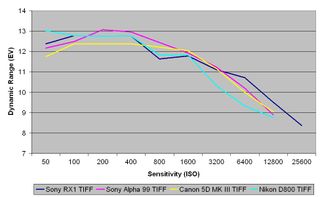
This chart indicates that TIFF images (after conversion from raw) from the Sony RX1 show similar dynamic range to the Nikon D800, producing very similar scores in the low-to mid-range. The RX1's raw images show less dynamic range than the Sony Alpha a99 in the mid-range sensitivities, but it beats the a99 at ISO 50, 100, 6400 and 12800. The RX1 again has a stronger dynamic range than the Canon EOS 5D Mark III at lower and higher settings, just dropping below the Canon at ISO 800 and 1600. The RX1, a99 and Canon all score a similar result at ISO 3200.
Amy has been writing about cameras, photography and associated tech since 2009. Amy was once part of the photography testing team for Future Publishing working across TechRadar, Digital Camera, PhotoPlus, N Photo and Photography Week. For her photography, she has won awards and has been exhibited. She often partakes in unusual projects - including one intense year where she used a different camera every single day. Amy is currently the Features Editor at Amateur Photographer magazine, and in her increasingly little spare time works across a number of high-profile publications including Wired, Stuff, Digital Camera World, Expert Reviews, and just a little off-tangent, PetsRadar.
